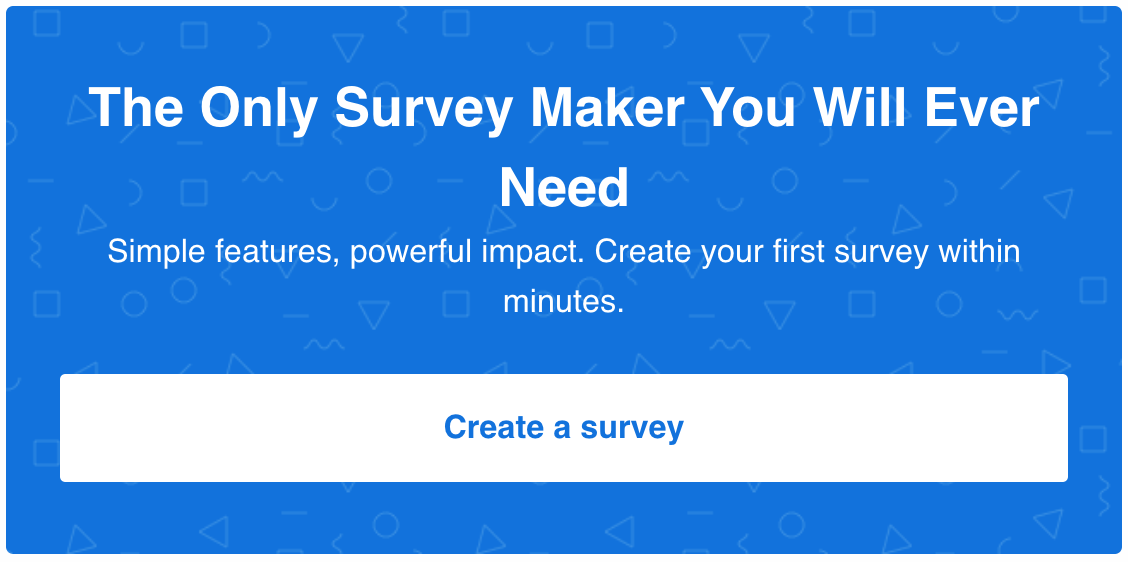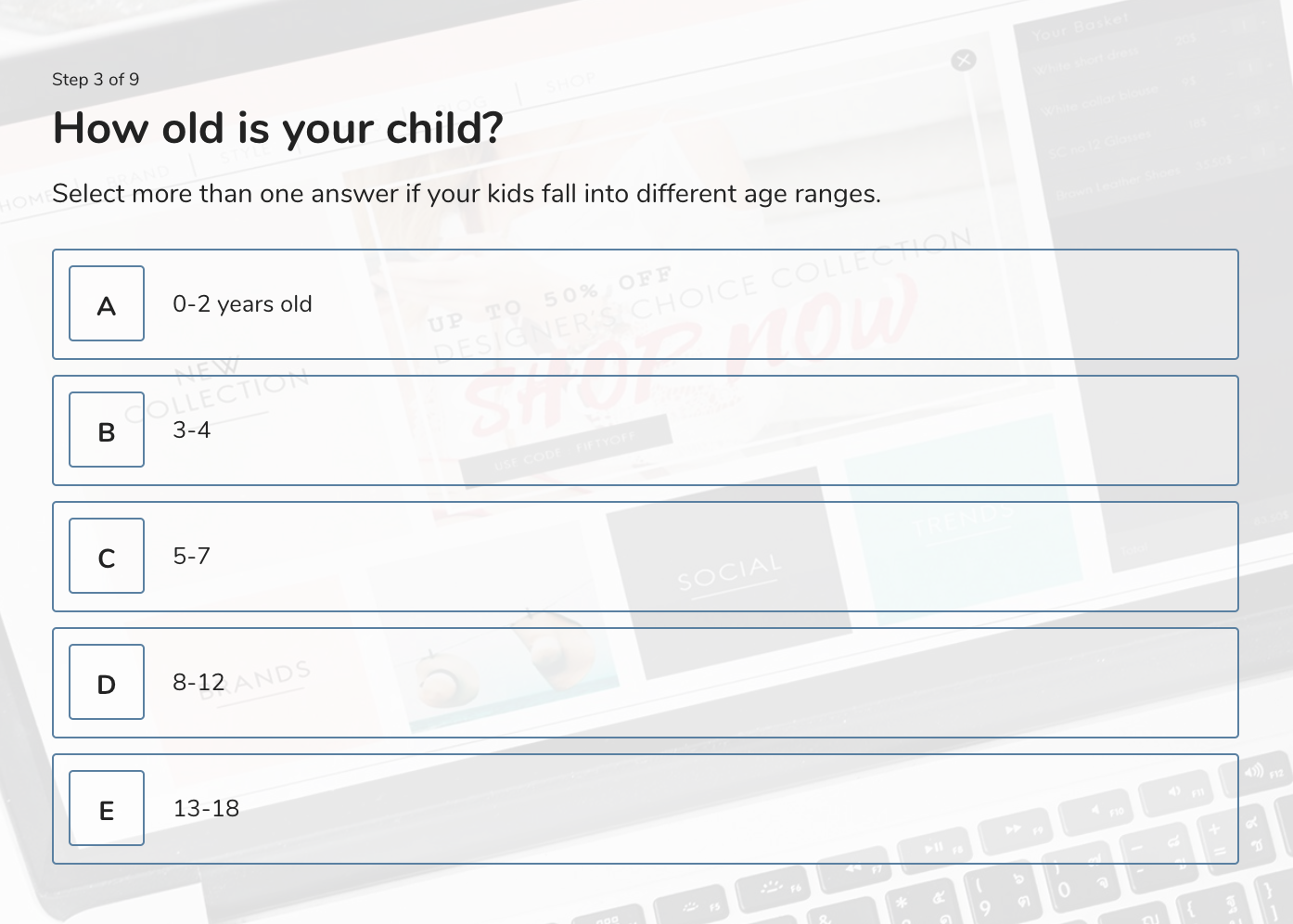Looking to do a survey but not sure whether your respondents are relevant enough?
Making sure you survey the right people is essential for the validity of survey results. And one of the easiest ways to qualify or disqualify respondents based on whether they meet certain criteria is by taking advantage of screening questions.
In this post, I will try to guide you through using screening questions in your surveys – you’ll learn what they are, why you should care, and how to best use them.
Let’s start.
What are screening questions?
Screening questions (also referred to as “screeners”) are used at the beginning of surveys to determine whether respondents are eligible to participate in research. In other words, screening questions either qualify or disqualify people from taking a survey.
With a survey maker, you’re able to use such questions to decide who is suitable to contribute to your survey and whose opinion on a certain topic isn’t relevant to your research. By using screeners, you can ensure that only people that belong to your target audience take part in your surveys.
Let’s say your company sells kids’ toys. You’ve just launched a new toy that’s designed for kids aged 3-7 and want to get feedback from parents. In order to get relevant results, you’ll want to survey only the parents with kids that fall into this age range. To ensure this, you can use a screening question like this:
In this case, only the respondents who answered “3-4” and “5-7” are a good fit for your survey. In other words, you’d use logic branching to disqualify the rest of the answers from taking the rest of the survey and only send the ones that match your target audience to the next question.
Why use screening questions in your surveys
1. Reach your target audience
By including screening questions in your surveys, you make sure that the respondents meet the criteria for your target audience. For instance, if you’re looking to survey parents who bought kids’ toys in the past 12 months, you’d ask about the last time they bought a toy.
2. Save time and money
Let’s face it, creating surveys, building/buying email lists, and paying for ads to reach more people can cost a significant sum. Not only that – analyzing tons of surveys can be time-consuming and cost-ineffective. Screening questions allow you to survey less and find out more while saving time and money.
3. Eliminate (or at least reduce) bias in research
Often, random survey respondents aren’t really qualified to contribute to a particular topic or research. They either lack knowledge or have a backstory that pushes them towards a particular answer, thus potentially hindering the validity of your research. To steer away from bias in research, you can use screening questions to disqualify respondents unlikely to contribute in a meaningful and unbiased way.
4. Better experience for survey takers
Don’t you hate it when you receive a survey that seems relevant to you, but after you’ve gone halfway through, you realize that it actually is not? This creates a poor user experience and causes respondents to give up in the midst of your survey, resulting in low completion rates. Screening questions allow respondents to immediately determine whether a survey is worth their time.
Types of screening questions
There are two main types of screening questions that you can use in your surveys – behavioral and industry-specific.
1. Behavioral screening questions
Just like the name suggests, behavioral screening questions qualify people on the basis of whether they behave in a certain way or not. In most cases, such screeners are related to the way respondents spend either their time or their money.
Here’s an example of a behavioral screener:
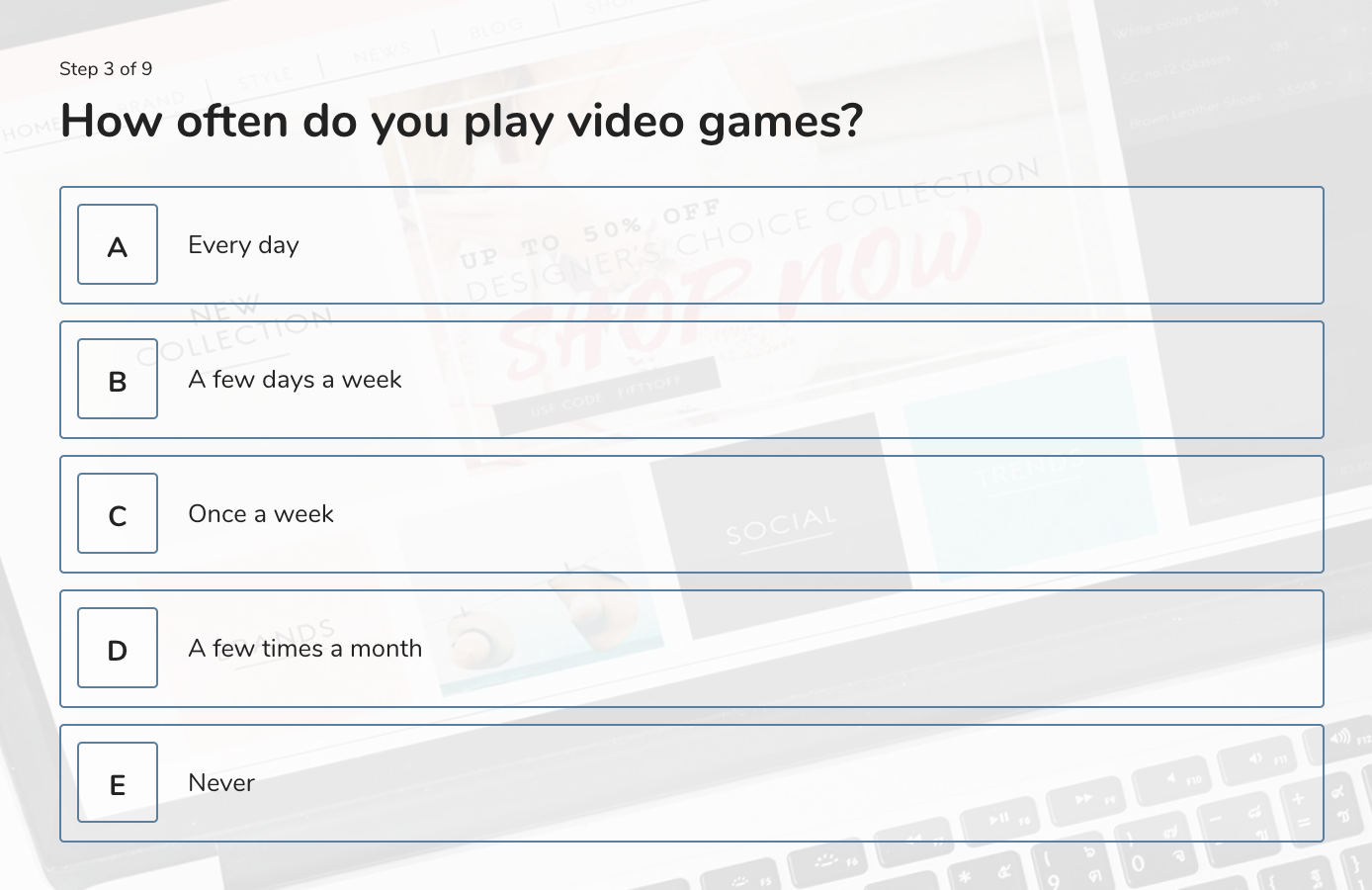

And another one:
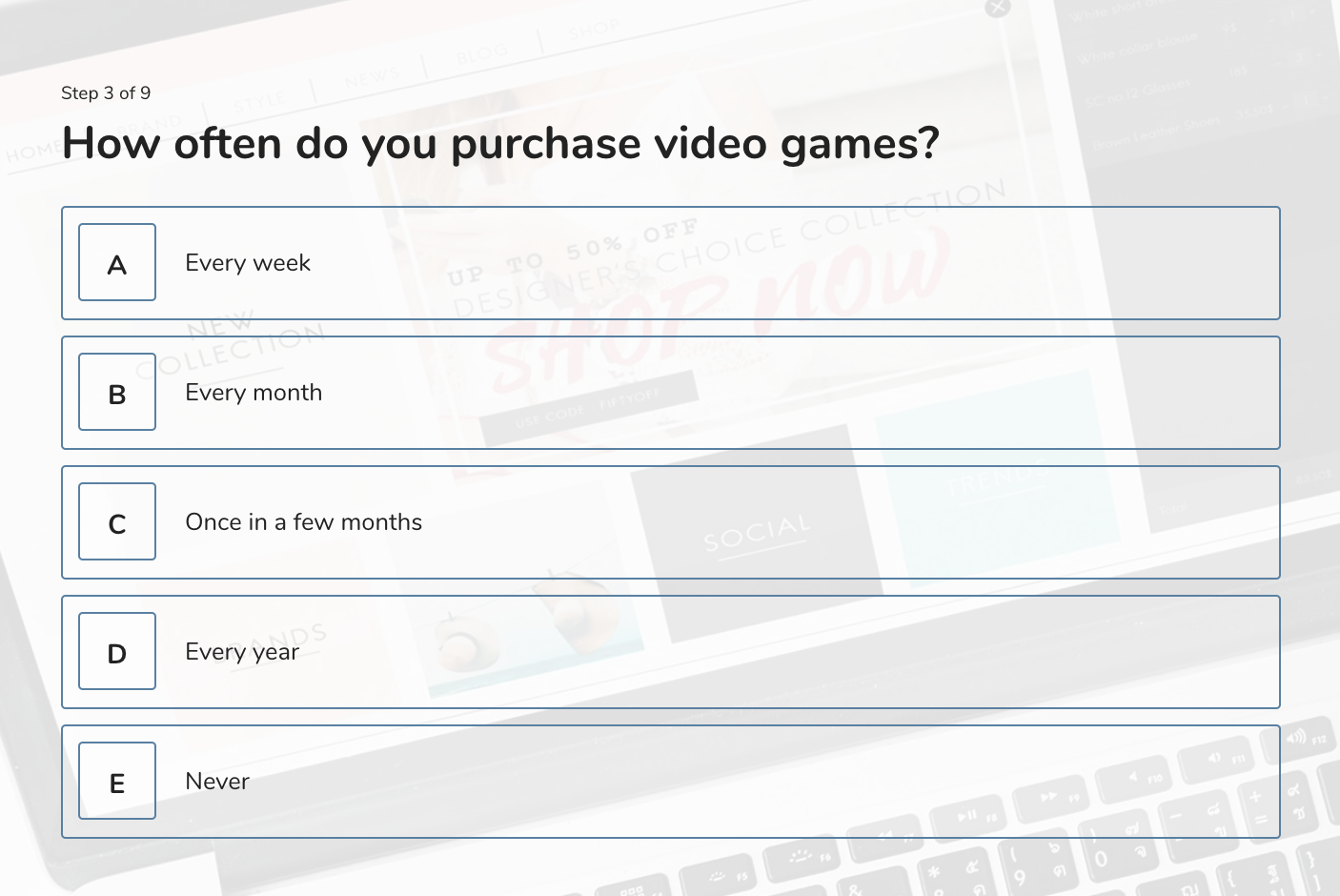

If your research aims to target passionate gamers who are likely to purchase a video game, you’d want to exclude from your survey those who rarely play or never buy video games.
2. Industry-specific screening questions
Industry-specific screeners will enable you to eliminate respondents who might provide biased answers due to working in the same industry (for one of your competitors, for example) or being related to someone who is.
Back to the toy shop example. Let’s say you’re looking to compare yourself to competitors. The first thing you want to do is disqualify people already working for some of your competitors (or people close to them). To be on the safe side, you can disqualify everyone working in the toy industry.
Here’s an example of an industry-specific screening question:
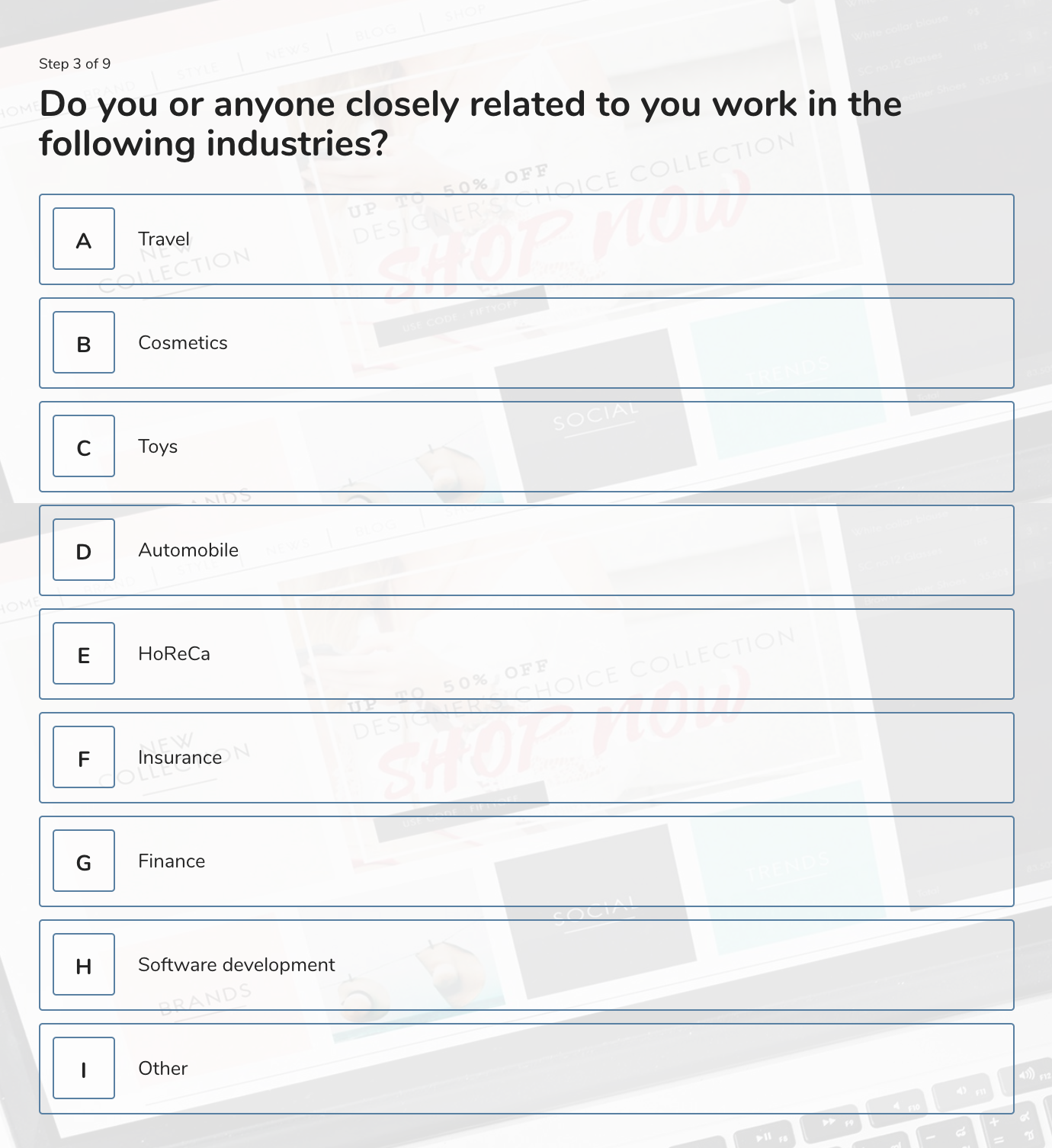

To reduce chances of bias, just disqualify survey takers who answered “Toys”.
Tips on how to use screeners effectively
By now, it should be clear to you why you should consider using screening questions and how they might benefit you. But how do you get the most out of screeners in your surveys?
Here are some tips to help get you on the right track:
Screening questions go first
All your screening questions need to go before the main part of the survey. So make sure to put screeners at the very beginning. Otherwise, you would be wasting both yours and your respondents’ time (if it turns out that they don’t qualify as your target audience).
Use the right number of screeners
In most cases, one screener question will suffice. This is optimal because it won’t overwhelm your respondents and you won’t need to spend too much time analyzing the answers. However, if including more than one screening question will lead to a better quality of responses you get, do not hesitate to add as many as needed. After all, if the respondents really are a match for your survey, they shouldn’t find such questions too bothersome.
Be specific enough
General or vague screening questions will confuse your respondents and fail to disqualify those that shouldn’t be taking part in the survey. That’s why you need to be specific enough and make it clear who the survey is for.
Avoid yes/no questions
People tend to answer such questions without giving them enough consideration. Also, it will help reduce the chances of acquiescence bias, where respondents tend to agree with your statement regardless of what their actual opinion really is.
Avoid leading questions or questions that might be too difficult
Leading questions that contain subjective pieces of information inserted to nudge respondents towards one answer option are a sure way to ruin your screening process. Another, equally good way is by adding questions that would make your respondents think too hard about the answer or feel stupid if they don’t know the answer.
Use logic branching (or skip logic) to qualify/disqualify respondents
Depending on the survey maker you’re using, you need to apply some kind of a disqualifying mechanism to your screening questions. The best survey tools, such as LeadQuizzes, allow you to use complex logic branching to send respondents to any part of your survey based on the answers they’ve previously provided.
Obviously, the respondents who pass your screening will be sent to the rest of the survey. But what about those who get disqualified? Do they get removed immediately, do you send them to a thank you page, or do you still want to learn more about them? Depending on the answer, you can send them exactly where you want.
Now that you know how to get the most out of screening questions, it’s time to make your first survey and apply this knowledge to get the right responses from the right people only!
